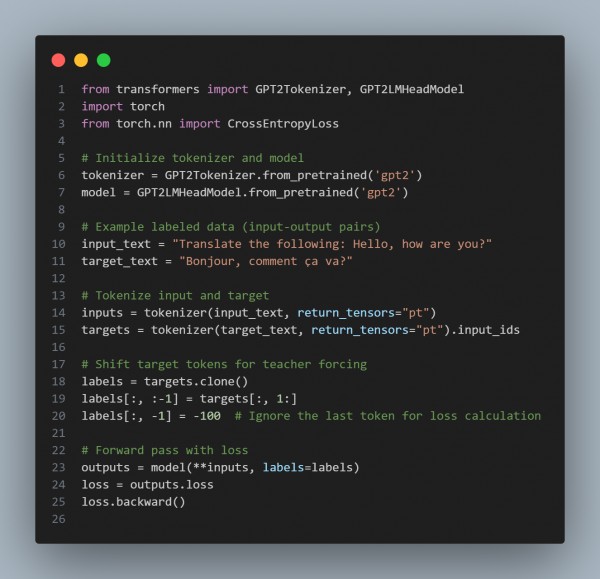To implement supervised pretraining for transformer-based generative models to handle high variance in outputs, you can follow the following key steps:
- Curate Labeled Data: Use a high-quality dataset with input-output pairs to provide a strong signal during training.
- Loss Function Choice: Use task-specific loss functions, such as cross-entropy for sequence generation.
- Teacher Forcing: During training, use ground truth tokens to condition the model for stable learning.
- Regularization: Apply dropout, weight decay, or label smoothing to prevent overfitting and improve generalization.
Here is the code snippets you can refer to:

In the above code, we are using the following key strategies:
- Supervised Pretraining: Guides the model with labeled data to reduce variance in outputs.
- Teacher Forcing: Stabilizes training by using ground truth tokens as inputs.
- Task-Specific Loss: Cross-entropy aligns predictions with target sequences.
- Pretrained Transformers: Fine-tune large pre-trained models like GPT-2 for better initialization.
Hence, by referring to the above, you can implement supervised pretraining for transformer-based generative models to handle high variance in outputs.
 REGISTER FOR FREE WEBINAR
X
REGISTER FOR FREE WEBINAR
X
 Thank you for registering
Join Edureka Meetup community for 100+ Free Webinars each month
JOIN MEETUP GROUP
Thank you for registering
Join Edureka Meetup community for 100+ Free Webinars each month
JOIN MEETUP GROUP